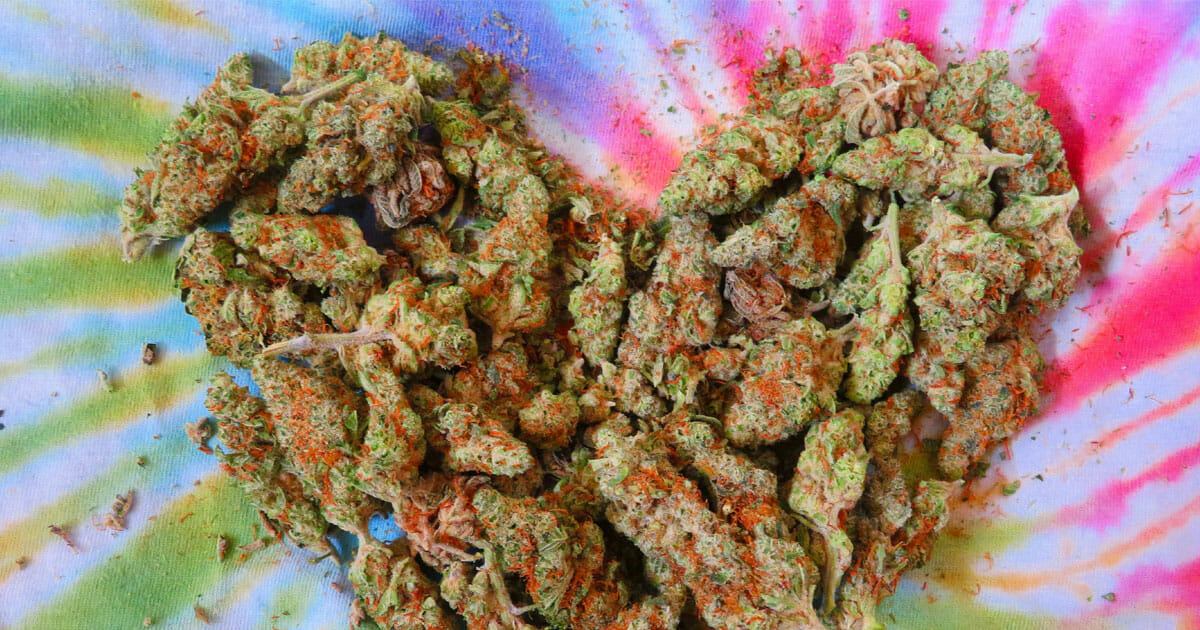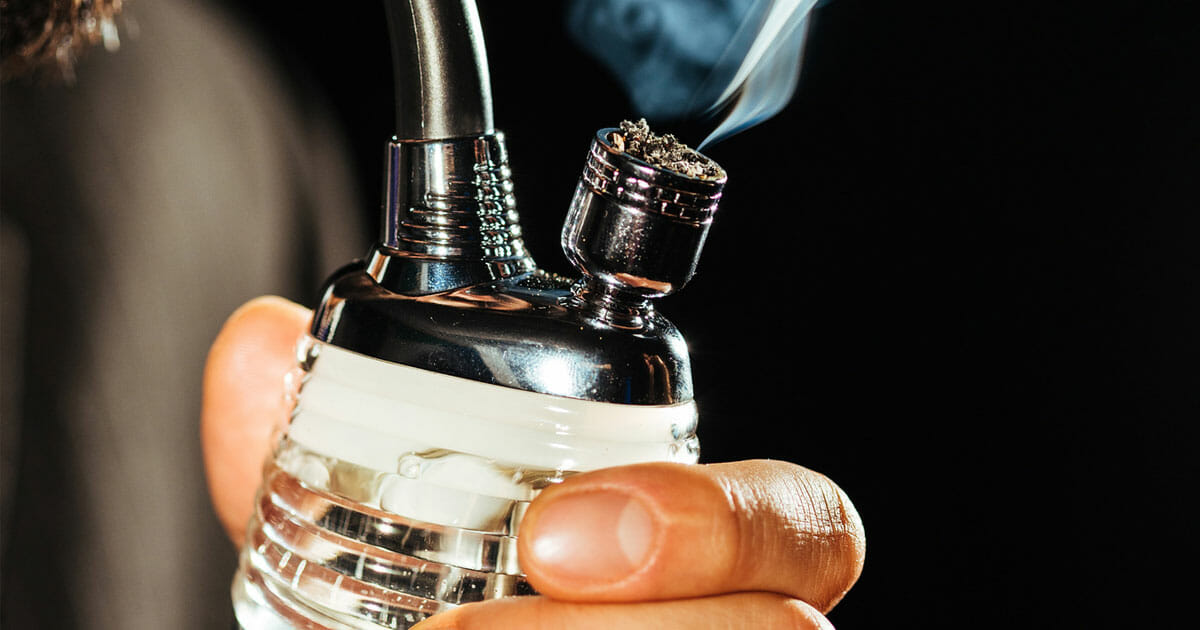Understanding Cannabis Flavonoids
Written by Marijuana Cannaisseur on Jun 22, 2022
Cannabis consists of hundreds of bioactive compounds, but there’s no arguing the fact that cannabinoids tend to get the most attention of any other compound. That’s likely because cannabinoids are most closely associated with the way cannabis can make an individual feel. This occurs because cannabinoids directly interact with the endocannabinoid system (ECS) in the human body, creating effects such as euphoria, enhancement of the senses, and alleviating certain health concerns like pain or inflammation.
When it comes to commonly discussed compounds found in cannabis, terpenes follow close behind cannabinoids. Terpenes have long been associated with the way in which cannabis flower appears and tastes. However, recent studies have also begun to highlight the various therapeutic benefits offered by terpenes that were once attributed to cannabinoids.
It’s important to note, though, that cannabinoids and terpenes are not the only types of compounds found in cannabis. Flavonoids are a third compound that truly deserves more attention. This compound, found throughout nature, contributes not only to the appearance of the cannabis plant but could play a critical role in its medicinal aspects as well.
What Are Flavonoids?
Flavonoids consist of several groups of polyphenolic compounds that appear as secondary metabolites in plants and fungi. This group of plant compounds have a structure similar to flavone (hence, the term flavonoid) and play an important role in producing various plant pigments, such as the colors yellow, purple, blue, and red. There are over 6,000 varieties of flavonoids, providing a wide range of functions. [1]Chae, S. C., Lee, J. H., & Park, S. U. (2013). Recent studies on flavonoids and their antioxidant activities. Excli Journal, 12, 226-230. Retrieved May 18, 2022, from … Continue reading
The term flavone, and the subsequent term flavonoid, stem from the Latin term flavus, which means blonde or yellow in color. This is the primary color found in nature. When it comes to cannabis specifically, flavonoids make up a generous share of the plant’s known compounds and exist in dozens of varieties within the cannabis plant. Cannabis shares flavonoids with other flowers, fruits, and vegetables, but there are also some flavonoids that are unique to the cannabis plant.
How Do Flavonoids Work?
Within nature, flavonoids work in several diverse ways. They can alter the appearance of a plant or flower, adding a pop of color that can attract pollinators and also influence the way we see our fruits and vegetables. Flavonoids also provide distinctive qualities that help distinguish between different strains of plants, including cannabis. They can affect the pigmentation of the cannabis plant, in the way that they can affect flowers or fruits like blueberries. Flavonoids play a key role in the different perceived shades of reds, purples, or blues in plants.
While flavonoids are primarily known as plant pigments, they do much more than just provide color. They also have protective properties, and a variety of other benefits for the plant. For example, flavonoids also help protect against certain elements, such as harmful UV rays, pests, and diseases. Flavonoids are known to help with seed development and growth.
Of course, flavonoids don’t just serve the plant itself, but also the organisms that consume it—positive effects of cannabis flavonoids are passed on to those who choose to smoke, vape, or otherwise consume it. One of the biggest benefits of flavonoids is associated with how they work as antioxidants and anti-inflammatory agents. [2]Pietta P. G. (2000). Flavonoids as antioxidants. Journal of natural products, 63(7), 1035–1042.https://doi.org/10.1021/np9904509
Flavonoids Have Many Health Benefits
Flavonoids have endless health benefits, with more being discovered every day. [3]Ballard, C. R., & Junior, M. R. M. (2019). Health benefits of flavonoids. In Bioactive compounds (pp. 185-201). Woodhead Publishing. https://doi.org/10.1016/B978-0-12-814774-0.00010-4 Flavonoids’ benefits include functioning as an antioxidant, preventing mutations, interfering with cancer development, reducing inflammation, reducing chronic pain, and regulating cellular enzyme functions. Here’s a closer look at how multiple conditions and body systems respond to flavonoids.

Flavonoids Can Improve Heart Health
Cardiovascular disease is considered one of the top killers around the world, but certainly in the United States. Flavonoids have been linked to improving cardiovascular health, including positive benefits when it comes to treating heart disease and high blood pressure. [4]Wang, C. Z., Mehendale, S. R., Calway, T.Yuan, C. S. (2011). Botanical flavonoids on coronary heart disease. The American journal of Chinese medicine, 39(04), … Continue reading Flavonoids can help reduce oxidation caused by LDL or bad cholesterol and improve lipid profiles. They can also aid in vasodilation and regulate the cell death process within the lining of blood vessels.
Diabetes
Diabetes continues to affect the health of more and more Americans annually. Depending on type, diabetes involves either an increased level of blood glucose or an increase in insulin resistance. Consuming flavonoids seems to help regulate carbohydrate digestion, insulin signaling, glucose uptake, and fat deposits.
Chronic Pain and Inflammation
Flavonoids provide a therapeutic role in a variety of conditions that can create chronic pain and inflammation. This includes osteoarthritis, Parkinson’s disease, colitis, and even pains associated with cancer. Flavonoids work by blocking certain cellular regulatory proteins that can contribute to flare-ups of pain and swelling.
Cancer Prevention
Flavonoids appear to participate in anticancer activities, such as seeking out and destroying free radicals that could damage large molecules within the body. They can also help to repair DNA, hinder tumor invasion, and regulate cellular metabolism.
Dominant Cannabis Flavonoids
While there are hundreds of varieties of flavonoids that can be found in cannabis, this number is expected to grow as opportunities for research continue to increase. Unfortunately, since cannabis is still illegal on a federal level, studies on the benefits of cannabis-exclusive flavonoids have been hampered. However, research has identified several flavonoids in abundance within the cannabis plant.

Cannaflavins A, B, and C
These flavonoids are only produced in the cannabis plant and are categorized as part of the flavonoid class known as flavones. Cannaflavin A appears to have medicinally beneficial anti-inflammatory properties that have shown the potential to be stronger than those found in the aspirin currently available on the market. As of today, Cannaflavin A has been the most studied flavonoid in the cannabis plant, while B and C continue to undergo research. Each of these different flavonoids harbor neuroprotective, antioxidant, and anti-cancer properties.
Quercetin
This flavonoid can be found within the cannabis plant as well as other natural fruits and vegetables. This is the most abundant flavonoid you’ll find within foods in the regular human diet and is often associated with fruits and vegetables that are deeply colored and rich in nutrients. For example, you can find quercetin in apples, berries, citrus fruits, kale, red onions, cocoa, and more.
Quercetin appears to work as a strong antioxidant that helps to fight free radicals within the body. It also works as an anti-inflammatory, antifungal, and antiviral agent. Future research is aimed at linking quercetin to improved physical and mental performances.
Kaempferol
This flavonoid is also found within the cannabis plant and other fruits and vegetables that make up our diet. This includes spinach, kale, broccoli, cucumbers, endive, beans, and more. The highest concentration of this flavonoid is found in capers and saffron. It has been linked with helping in the treatment of cancer by fighting inflammation, helping to form new blood cells, and modulating cell death
Apigenin
This flavonoid is found in the cannabis plant as well as in oranges, tarragon, onions, celery, basil, mint, and more. It is believed to be the active ingredient in chamomile tea that helps with sleep. Thus, one of the most important functions of this flavonoid is its sedative and muscle-relaxing effects. It may also help fight anxiety and depression.
Cannabis Flavonoids Are Not Cannabinoids
It is important to understand that flavonoids are not cannabinoids. These are two different types of compounds, both found in the cannabis plant. Cannabinoids work within the ECS and are primarily found in nature—endocannabinoids are produced by the human body itself. Meanwhile, flavonoids are produced by plants. While these two compounds are different, they do work together in a synergetic nature, often referred to as the entourage effect.
The entourage effect describes the way the various cannabis compounds work together to create an overall more beneficial effect once ingested. Cannabinoids work within our bodies by interacting with cannabinoid receptors throughout the endocannabinoid system, a system that includes the brain and central nervous system, digestive system, and more. These interactions serve to create the effect of cannabis on the body but can be further altered and influenced by both terpenes and flavonoids. The combined effects of all cannabis compounds are what makes us experience each cannabis strain differently.
Cannabis Flavonoids Help Us Create Full Terpene Profiles
The flavor and aroma of different cannabis plants are often attributed to terpenes. While this is true, researchers are now discovering the important role that flavonoids play as well. Getting the most out of cannabis flavonoids largely depends on the interaction achieved between the flavonoids and the terpenes.
Flavonoids do much more than affect the color and odor of the cannabis strain. As mentioned, they also play a role in altering the way you experience your cannabis upon consumption. Terpenes also work closely with cannabinoids, creating different effects depending on the combination of terpenes, cannabinoids, and flavonoids present. All compounds can provide therapeutic, physical, and mental benefits on their own.
Unless you’ve isolated cannabinoids, terpenes, or flavonoids, you’ll experience them together via the entourage effect. This is why some cannabis can leave you feeling alert and creative while others can leave you feeling relaxed and lethargic.
The Ratio of Terpenes to Flavonoids Appears to Be Very Important
No two cannabis plants are the same. In today’s market, you’ll encounter hybrid plants that are designed to have the best compounds of different strains to provide the most beneficial effects possible. Strains can be created with different goals in mind, such as providing body relaxation, pain relief, creative inspiration, and more. The achieved effect is accomplished by cannabinoids, terpenes, and flavonoids all working together. Thus, different concentrations of the various compounds can produce significantly different results.
There is still research that needs to be done to understand the different effects achieved by different proportions of flavonoids to terpenes. Cannabis affects everyone differently due to a wide variety of factors such as age, activity levels, weight, gender, and more. As researchers continue to discover more about the entourage effect, we will continue to learn more about the detailed ways flavonoids work with terpenes.
Find More Information on Cannabis Flavonoids?
The world of cannabis flavonoids is fascinating. New research and studies continue to launch, all with the goal of helping cannabis users and growers alike better understand the role flavonoids play. In particular, we expect a great deal of focus on how flavonoids can boost the therapeutic potential of your favorite cannabis strain.
Sources:
| ↑1 | Chae, S. C., Lee, J. H., & Park, S. U. (2013). Recent studies on flavonoids and their antioxidant activities. Excli Journal, 12, 226-230. Retrieved May 18, 2022, from https://www.ncbi.nlm.nih.gov/pmc/articles/PMC4803004/ |
|---|---|
| ↑2 | Pietta P. G. (2000). Flavonoids as antioxidants. Journal of natural products, 63(7), 1035–1042.https://doi.org/10.1021/np9904509 |
| ↑3 | Ballard, C. R., & Junior, M. R. M. (2019). Health benefits of flavonoids. In Bioactive compounds (pp. 185-201). Woodhead Publishing. https://doi.org/10.1016/B978-0-12-814774-0.00010-4 |
| ↑4 | Wang, C. Z., Mehendale, S. R., Calway, T.Yuan, C. S. (2011). Botanical flavonoids on coronary heart disease. The American journal of Chinese medicine, 39(04), 661-671.https://doi.org/10.1142/S0192415X1100910X |






